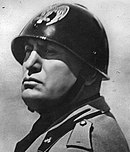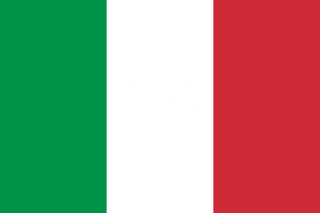
The Italian Social Republic, known prior to December 1943 as the National Republican State of Italy, but more popularly known as the Republic of Salò, was a Nazi-German puppet state with limited diplomatic recognition that was created during the latter part of World War II, which existed from the beginning of the German occupation of Italy in September 1943 until the surrender of German troops in Italy in May 1945. The German occupation triggered widespread national resistance against it and the Italian Social Republic, leading to the Italian Civil War.
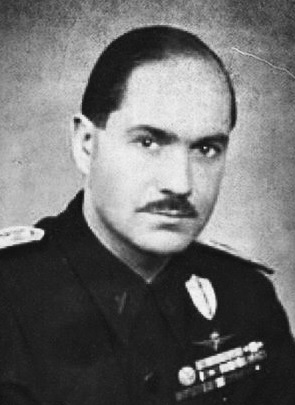
Alessandro Pavolini was an Italian politician, journalist, and essayist. He was notable for his involvement in the Italian fascist government, during World War II, and also for his cruelty against the opponents of fascism.

The Auxiliary Corps of the Black Shirts' Action Squads, most widely known as the Black Brigades, was one of the Fascist paramilitary groups, organized and run by the Republican Fascist Party operating in the Italian Social Republic, during the final years of World War II, and after the signing of the Italian Armistice in 1943. They were officially led by Alessandro Pavolini, former Minister of Culture of the fascist era during the last years of the Kingdom of Italy.
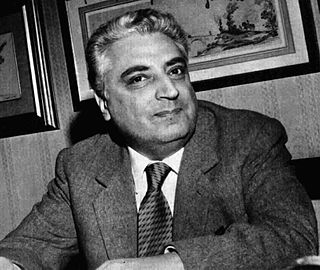
Renzo De Felice was an Italian historian, who specialized in the Fascist era, writing, among other works, a 6000-page biography of Mussolini. He argued that Mussolini was a revolutionary modernizer in domestic issues but a pragmatist in foreign policy who continued the Realpolitik policies of Italy from 1861 to 1922. Historian of Italy Philip Morgan has called De Felice's biography of Mussolini "a very controversial, influential and at the same time problematic re-reading of Mussolini and Fascism" and rejected the contention that his work rose above politics to "scientific objectivity", as claimed by the author and his defenders.
Domenico Pellegrini Giampietro was an Italian academic, economist, lawyer, politician, and journalist.
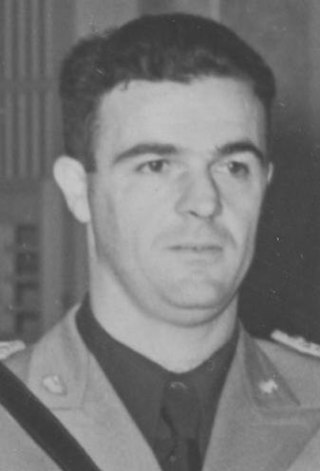
Aldo Vidussoni was an Italian lawyer and Fascist politician.

Italian fascism, also classical fascism and Fascism, is the original fascist ideology, which Giovanni Gentile and Benito Mussolini developed in Italy. The ideology of Italian Fascism is associated with a series of political parties led by Mussolini: the National Fascist Party (PNF), which governed the Kingdom of Italy from 1922 until 1943, and the Republican Fascist Party (PFR), which governed the Italian Social Republic from 1943 to 1945. Italian fascism also is associated with the post–war Italian Social Movement (MSI) and later Italian neo-fascist political organisations.

The Italian Civil War was a civil war in the Kingdom of Italy fought during the Italian campaign of World War II between Italian fascists and Italian partisans and, to a lesser extent, the Italian Co-belligerent Army.

The "Manifesto of Fascist Intellectuals", by the actualist philosopher Giovanni Gentile in 1925, formally established the political and ideologic foundations of Italian Fascism. It justifies the political violence of the Blackshirt paramilitaries of the National Fascist Party, in the revolutionary realisation of Italian Fascism as the authoritarian and totalitarian rėgime of Prime Minister Benito Mussolini, who ruled Italy as Il Duce, from 1922 to 1943.
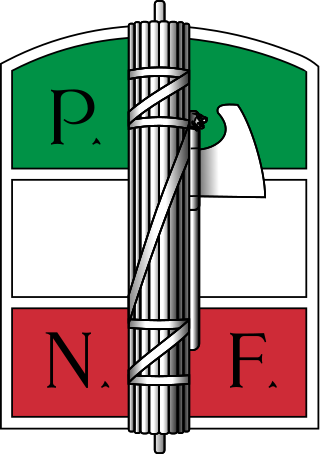
The National Fascist Party was a political party in Italy, created by Benito Mussolini as the political expression of Italian fascism and as a reorganisation of the previous Italian Fasces of Combat. The party ruled the Kingdom of Italy from 1922 when Fascists took power with the March on Rome until the fall of the Fascist regime in 1943, when Mussolini was deposed by the Grand Council of Fascism. It was succeeded, in the territories under the control of the Italian Social Republic, by the Republican Fascist Party, ultimately dissolved at the end of World War II.
This is a list of words, terms, concepts, and slogans in the Italian language and Latin language which were specifically used in Fascist Italian monarchy and Italian Social Republic.
Events from the year 1921 in Italy.
Piera Fondelli Gatteschi was the commander of the Female Auxiliary Service of the Italian Social Republic, a member of the National Fascist Party and a participant in the March on Rome.
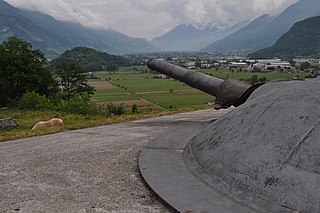
The Valtellina Redoubt or, officially, in Italian: Ridotto Alpino Repubblicano or RAR, was the intended final stronghold or redoubt of the Italian fascist regime of Benito Mussolini at the end of World War II in Europe. It was to be based in the Valtellina, a valley in the Italian Alps, which had the natural protection afforded by the surrounding mountains as well as the possibility of re-using fortifications built in the area for World War I. The idea was initially proposed in September 1944 by Alessandro Pavolini, one of the fascist leaders, who saw it as the place for the regime to make a "heroic" last stand which would inspire a future fascist revolution.

Paolo Zerbino was an Italian Fascist politician, prefect of Split and Turin during World War II and Minister of the Interior of the Italian Social Republic.
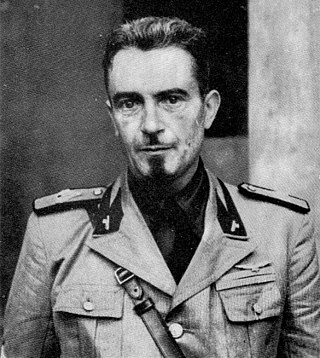
Igino Ghisellini was an Italian Fascist politician and soldier.

Giuseppe Solaro was an Italian Fascist politician and soldier, federal secretary of the Republican Fascist Party of Turin during the Italian Social Republic.

Giovanni Battista Caneva was an Italian Fascist politician, syndicalist and athlete. He was federal secretary of the Republican Fascist Party of Vicenza and head of the province of Reggio Emilia during the Italian Social Republic.
Giuseppe Peverelli was an Italian industrialist and Fascist politician, who served as Minister of Communications for one day in the Mussolini Cabinet in July 1943 and then again in the Italian Social Republic from September to October 1943.

















